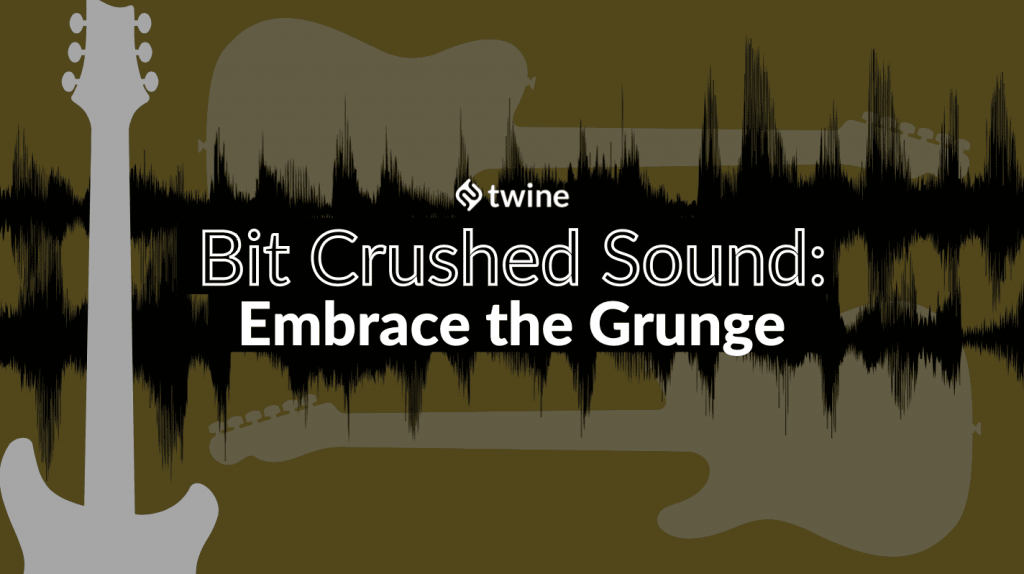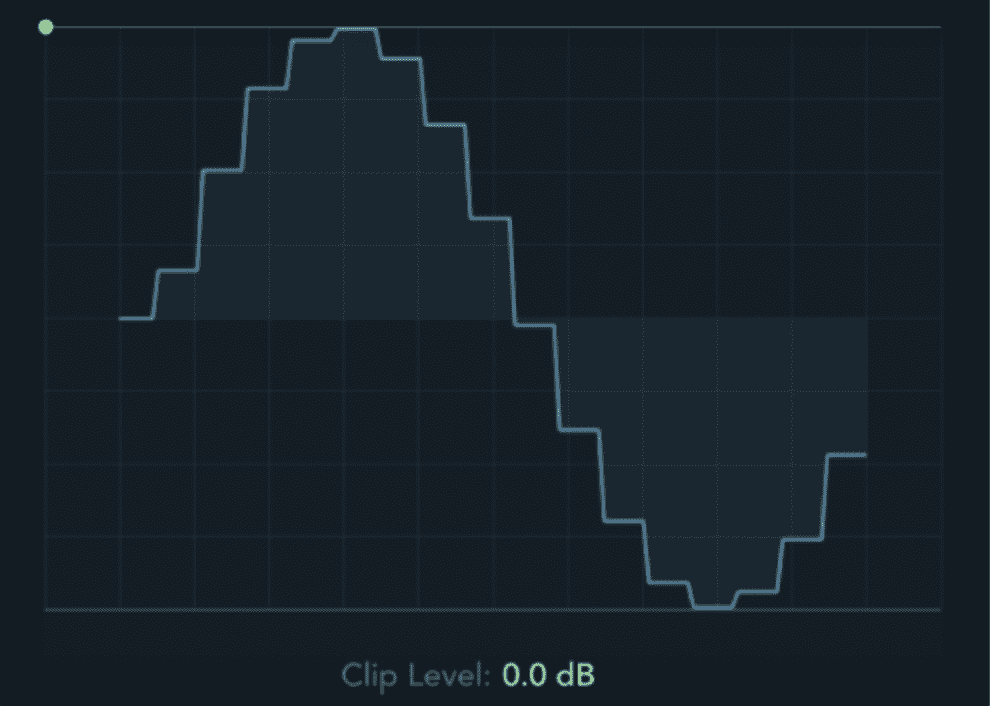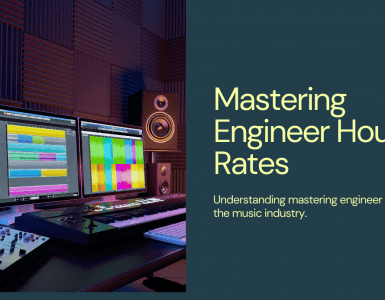
When we think of distorted music, our first response may be to think of the classic bit crushed sound.
But just what is it? And how would one go about creating it?
Deliberately reducing the quality of your digital audio seems like a bad idea, however, it was particularly popular with a genre of music fondly referred to as Grunge. That’s right – the famous musicians of the ’80s and ’90s all had a handy audio distorter up their sleeve!
In this article, we explain what bit crushing is and suggest some awesome tools to crank up the distortion.
But, before we get into bit crushing…
What does distortion mean?

To put a long story short – music production software has its limits. There is a fine line to the amount of bass and volume it can produce, and when that line is crossed, it will distort the sound of the audio.
When this distortion is achieved accidentally, the sound appears raspy, gritty – most people will be looking for the immediate mute button. However, when used with intent – i.e. not overly loud with too much bass – it can have significant positive effects on the music.
Musical artists generally use distortion and audio saturation in their tracks to compliment the music; whether that be to brighten those synths, or dull out those vocals.
What is bit crushing?

Bit crushing is simply the process of reducing the bit rate and sample rate of any audio signal to add digital distortion to your mixes. Bitrate refers to the number of bits—or the amount of data—that are processed over a certain amount of time. In audio, this usually means kilobits per second. For example, the music you buy on iTunes is 256 kilobits per second, meaning there are 256 kilobits of data stored in every second of a song.
Musicradar.com put it pretty well here:
Bitcrushing (or its closely related cousin, sample rate reduction) is simply the process of reducing the accuracy of a digital signal. Let’s say we’ve got a signal recorded at the audio CD standard 16-bit resolution and 44.1kHz sample rate. By reducing it to, say, 8-bit resolution or 22.05kHz sample rate, we discard some of the information.
As a result, the signal becomes less accurate. The more information we discard, the more inaccurate the signal gets. Note, however, that we can bit crush any digital signal, not just one which is based on a recording of analog input. The signal to be bit-crushed may only exist in the digital domain (for example, the output of a synth plug-in).
Creating audio that is dramatically bit crushed, and reducing the sample rate of a signal, you can create all kinds of artifacts and frequency responses. You can create virtually anything – from cold, clinical distortion to retro lo-fi effects – the audio realm is your oyster.
A super famous example of bit-crushed sound is the classic AWOLNATION with their track SAIL. Here, you can see how it’s possible to use the bit crushing method to create an innovative and original sound.
Now, this audio is used just about everywhere. Of course, we’re not claiming it’s entirely down to the use of bit crushing, but we’re sure that if it hadn’t featured this recognizable audio glitch, it probably wouldn’t be as striking of a record.
How bit crushed sound was used with Grunge music
Favoring a back-to-basics, “this guitar is second-hand” approach, Grunge became a super easy, yet super trendy way of making music. A lot of the time, audio created this way had a raspy, and raw quality – which is what a lot of the famous musicians of that time were known for (think Nirvana, Soundgarden, and Pearl Jam).
One way distortion was achieved in grunge music was through the likes of a distortion pedal:
Music-wise grunge songs would usually have very quiet verses and explode into huge choruses. Hence, distortion pedals were an absolutely crucial link to the effects chain.
There are countless examples of this kind of dynamics in songs – for example, the ultimate grunge anthem Smells Like Teen Spirit.
In this minimalist approach that we are talking about, high-end, expensive pedals are completely forbidden. Instead, inexpensive sound-making machines like Boss pedals are very common.
https://guitarunit.com/10-essential-guitar-pedals-for-grunge-and-alt-rock/
If you needed a bit of a music break to refresh your grunge memory, check out Cobain and the distortion pedals at work here…
Nothing quite says distortion like some grunge guitar sound! Grunge effects live in rock-star fashion – and now, it’s onto you.
How do I create bit crushed audio?

There are plenty of great tools to bitcrush out there – and the best thing is most of them are free.
All the major DAW’s (Digital Audio Workstation) have their own built-in bit crushing plugins, but there is a multitude of other plugins (again, free) that offer the same effect.
Bedroom Producers blog has an awesome list of free bit-crushing plugins with links to download, and, if you’re looking for something on the go, there’s Buttercup Bitcrush too – bit crush that audio from your mobile!
Krush by Tritik is also worth a mention: as well as bit crushing and downsampling algorithms, their platform gives you the warmth of modeled analog filters (low pass and high pass). Not to mention, it has an awesome modulation section that allows you to modulate just about any parameter – we’re talking seriously crushing your tracks!
To hear more examples of what bit crushed sample sounds like, and compare it with a clean signal, head to EDM Prod – otherwise, check out the rest of our music production articles here!
Ready to hire? Our marketplace of over 410,000 freelancers has the skills and expertise needed to skyrocket your business to the next level. From marketers to designers, copywriters to SEO experts – browse the talented bunch here!








